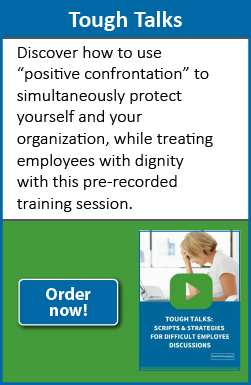What’s the Correct HR-to-Employee Ratio?
 Issue: It can be easy to misuse or misinterpret the controversial HR-to-employee ratio.
Issue: It can be easy to misuse or misinterpret the controversial HR-to-employee ratio.
Benefit: That metric can help measure HR effectiveness, but only if interpreted and used correctly.
Action: Recalculate your ratio using the advice below, then use the number as a guide for future staffing.
HR-to-employee ratios are a somewhat controversial metric that can help establish HR staffing and determine how well HR delivers services. But you should calculate and use the number correctly, or don’t use it at all.
“The ratio is very helpful if you know what you’re doing,” says James Hatch, a partner with PricewaterhouseCoopers’ Saratoga Institute, which specializes in HR metrics. “But it can be very dangerous if you don’t know what you’re doing.”
One key danger: Executives may use ratios as a reason to cut HR staff.
Many HR professionals don’t calculate the ratio correctly. Here’s how to do it right: Divide the number of HR full-time equivalent (FTE) positions by the total number of employees (FTEs), then multiply the outcome by 100.
Example of a six-employee HR department at a 250-employee company:
6 × 100 = 2.4 ratio
250
But HR professionals often include or exclude the wrong HR jobs in the formula. The ratio should include HR professionals who work as generalists and those in areas such as benefits, compensation, labor relations and organizational effectiveness, says Hatch. The ratio should exclude payroll and training-and-development employees.
High HR-to-employee ratios in smaller organizations (see chart below) may mean that it takes a minimum HR baseline to deliver primary HR services. But once that baseline is met, the incremental amount of HR staff required to support more employees doesn’t increase at the same rate.
If your ratio is higher than average, examine your HR department’s role.
If the role is primarily organizational asset preservation—preventing litigation by overseeing policies, cutting HR costs and outsourcing—then a ratio of 1.00 (1 per 100 employees) for large employers is the standard benchmark. If your department’s goal is asset creation—an ongoing alignment with business strategy—then the ratio could be near .60 (1 per 166 employees).
High HR ratios aren’t necessarily bad for departments that are strategic partners, have mature self-service technology and decentralized HR departments. Example: A hotel chain with a core strategy to provide intimate customer service maintains a .80 ratio compared to 1.3 for competitors.
Suppose your HR department has a high ratio, but isn’t a strategic partner and has few automated HR services. Look to streamline services and possibly outsource.
Low HR-to-employee ratios can be misleading. “A low ratio might mean you get things done quickly, but if you’re getting the wrong thing done quickly, it has no value,” says Claudia Schwartz, principal of HR Results consulting firm.
Schwartz once used a high ratio to ask for more employees when she headed the HR department at a 10,000-employee company. However, she used the ratio as only one piece of the information to make her case, and she made sure to measure the number accurately.
Average HR-to-Employee Ratio, by Organization Size
Fewer than 100 2.70
100 to 249 1.26
250 to 499 1.07
500 to 999 0.82
1,000 to 2,499 0.79
2,500 to 7,499 0.53
7,500 or more 0.42
Source: SHRM Human Capital Benchmarking Study
__________________________
What’s the Ideal HR-to-Staff Ratio?
Comments from participants in our HR Specialist Weekly forum:
1. “I think a good ratio is one HR employee to every 100 employees. After 100, it starts to get a little more difficult to keep on top of things.” —Casey, Michigan
2. “I strongly believe that once your company reaches 50 employees, there should be some other HR assistance within the department. Many federal laws, as well as benefit practices, change once your company moves from a small group to a midsize group.” —S.B., New Jersey
3. “(The ratio) depends on how much the company understands and appreciates what HR professionals do. When I was working in retail, I was the only HR person in the store. I had between 170 and 215 employees. That company knew that HR management was important to an extent, but not enough to provide extra help.” —Chris




